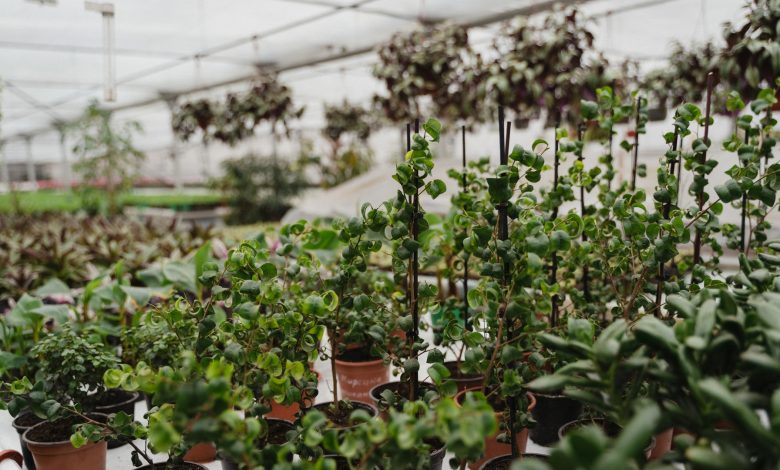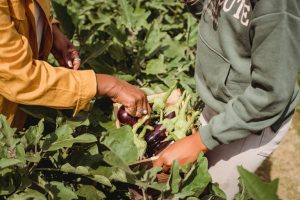Growing Vegetables In Greenhouses – Benefits and Disadvantages

Whether planting is a pastime or a profession, growing vegetables in greenhouses are an advantageous garden solution. You can see greenhouses as a garden oasis where you can plant almost anything. Greenhouse fanatics plant things like vegetables, fruits, flowers, herbs, cacti, figs, and bonsai in backyard greenhouses.
Greenhouses stabilize the growing environment by buffering ambient temperatures and protecting plants from extreme cold. By controlling the environment, greenhouses keep air and soil temperatures stable, enabling early planting and harvesting. If you can control the temperature of the garden inside a greenhouse, you can start planting earlier, with seasonal plants and other delayed plantings. Let’s have a look at the requirements and other possible benefits of growing vegetables in greenhouses.
Climatic Conditions of Growing Vegetables in Greenhouses
Greenhouses stabilize the growing environment by buffering ambient temperatures and protecting plants from extreme cold. By controlling the environment, greenhouses keep air and soil temperatures stable, enabling early planting and harvesting. If you can control the temperature of the garden inside a greenhouse, you can start planting earlier, with seasonal plants and other delayed plantings.
The different climatic conditions of the regions where the greenhouse is desired to be established cause the greenhouses to be constructed in different ways. Factors such as temperature values of the region, wind conditions, precipitation type, intensity and duration, sun exposure, and latitude are effective in choosing the greenhouse type. For example, in cold, windy, and snowy regions, you have to set up the greenhouse lower, higher in hot places, and more durable in snowy and stormy regions.
Topographic and Ecological Characteristics of the Greenhouse Site
Conditions such as the topographic condition of the place where the greenhouse is intended, the slope and direction of the land, its location on a flat area or in a valley affect the type of greenhouse. For example, in flat areas, you will be able to set up a blockk greenhouse very easily, but on sloping lands, it is very difficult.
Positive effects of greenhouse cultivation

The positive effects of greenhouse cultivation are not limited to the benefits for your plants. The benefits of greenhouses include crop protection, climate control, growing seasons, and much more. Your garden style in a greenhouse can thus improve the efficiency of the plants.
The variety
Unlike plants that can be grown indoors, one of the coolest things about owning a greenhouse is that you can plant pretty much anything you want. If you set up a greenhouse, you can grow as many seeds as you want. Most of the time you have more than enough greenhouse plants to give to others.
Another reason why many gardeners turn to the greenhouse nursery is to extend the growing season and grow more plants. The possibility of a longer growing season for plants makes your greenhouse a year-round or seasonal growth area. Cultivation in a greenhouse also allows you to create a uniform environment for your plants that is safe from extreme weather conditions.
Better plant protection

When you understand what conditions your plants need in the greenhouse to survive it allows you to adjust your ideal harvest. Greenhouses also are beneficial when it comes to protecting your plants from animals, insects, and bad weather. The seeds you want to root and grow in a greenhouse will do better under normal conditions than those planted in a garden, even if they do not manage to survive. Protection from bad weather Planting your plants in greenhouses protects you from traditional garden problems.
When plants grow in a greenhouse, they get the sun, but you also have to protect them from the elements. Greenhouses allow you to control the light by using shades or blackout cloths so that you can control the blossom, seed, and fruit cycle of your plants.
By protecting your plants in a greenhouse, you don’t have to worry about annoying nature. Vegetable cultivation in the greenhouse versus vegetable cultivation outdoors has many differences to cultivation in greenhouses. Greenhouses help you protect your plants from the elements, pests, and diseases.
Plant diseases such as rot can be minimized by growing tomatoes in a greenhouse. Greenhouses are a great enrichment for growing vegetables in your garden. Greenhouses prolong your growing season, and provide you with fresh vegetables in winter and spring. Growing vegetables and fruit in greenhouses allows you to create the right conditions that make it easy for you to achieve large yields of products, including seasonal foods so that you do not have to pay higher food prices.
Greenhouses protect plants from many diseases, both on the ground and on plants that are infested by rain. External conditions do not affect workers, and greenhouses protect the environment by providing safe and stable conditions. Fungal spores are more likely to reach your plants if they grow in conditions such as greenhouses that favor fungi that attack your plants.
More Control
The cultivation of greenhouses increases plant production. The reason is that it gets possible to create optimal climatic conditions for plant growth and grow more plants per square meter than open-field cultivation. Greenhouses allow you to grow all kinds of plants throughout the year, from larger plants to warmer temperatures that accelerate growth. You can also control the water needed for each plant in your greenhouse, saving water.
Planning your planting space in a greenhouse has the advantage that for some plants high side walls and trellises grow. You have to keep other greenhouse plants such as basil and cut flowers on horizontal trellis such as Hortanova nets. For above-ground cultivation, salad mixtures and seed drills can speed up sowing. If you choose growing vegetables in a greenhouse, you have to choose the right sol for your plants.
Experiments
Last but not least, greenhouses not only create the best environment for planting, but also for one’s abilities as a gardener to develop and prosper. Greenhouses allow you to concoct divine combinations in your garden, experiment with your ingredients, and grow wonderful healthy vegetables. You can try growing cucumbers in the greenhouse.
Possible disadvantages of growing vegetables in greenhouses

Conversely, the closed environment of a greenhouse can make plants vulnerable in the greenhouse garden for many reasons. For example, weak winter light and early sunsets emanating from the greenhouse walls can signal to plants that the growing season is over. Moreover freezing temperatures can penetrate the greenhouse, damaging delicate leaves and flowers. Plants are more fragile than robust in a greenhouse environment.
In a closed environment such as a greenhouse, plants that depend on fruit pollination cannot meet their pollination requirements due to a lack of bees or a strong wind that loosely shakes the pollen.





